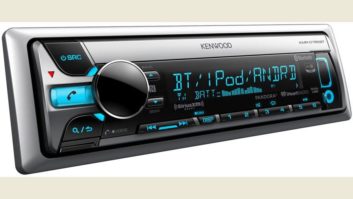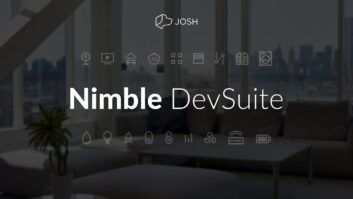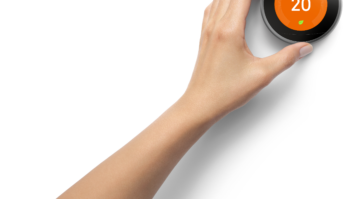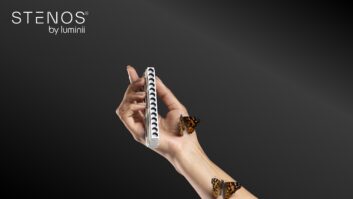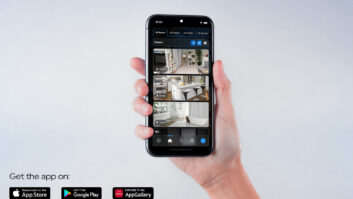LAS VEGAS — Kenwood is focusing on smartphone connectivity with multiple key product developments, including the launch of its first two head units incorporating both Apple CarPlay and Android Auto.
In launching 43 new car aftermarket products, excluding accessories, the company is also stepping up smartphone integration by:
• expanding the number of heads with HDMI connections to smartphones to nine models from eight;
• expanding the number of heads with Pandora control to 35 from 32 and iHeartRadio control to 35 from 25 in 2014 for USB-connected iPhones, with almost as many heads controlling those apps on Bluetooth-connected iPhones and Android phones;
• expanding AptX streaming over Bluetooth beyond multimedia heads to five CD receivers, including one marine/ power-sports modell AptX joins AAC streaming over Bluetooth, available in many models like last year; and
• bringing Android Open Accessory (AOA) to all Excelon- and Kenwood-series CD receivers and DMRs to enable control of music stored on USB-connected Android 4.1 and later phones while charging them. With a free Kenwood app for Android phones, the heads search for Android-stored music by artist, album genre, and song title.
In other smartphone developments, the company is launching the KCA-WL100 Wi-Fi dongle, which plugs into a head’s HDMI port to display Android-phone A/V content. The dongle also enables the head-unit’s touchscreen to control all Android apps when the car’s parking brake is on. A few apps, such as Waze navigation, can be controlled when the car is in motion. The device makes it unnecessary for users, mainly of Samsung’s Android phones, to buy a special, hard-to-find pin adapter to plug their phones into the head units’ HDMI ports. Dongle-connected iPhones pass through only audio, and the head’s touchscreen won’t control iPhone apps.
CarPlay/Android Auto: Details of the two CarPlay/Android Auto head units were not available at press time. One is in the mainstream Kenwood series, and the other is in the step-up eXcelon series. Both models, however, will be top-end multimedia CD/DVD receivers without navigation but with 7-inch touchscreens and HDMI inputs.
With Android Auto and CarPlay, head-unit touchscreens display a driver-friendly UI that lets drivers access such key smartphone apps such as the phone’s music library, navigation apps, and select music-streaming apps.
In the Cloud: In Cloud-connected head units, the company’s $1,600-suggested DNN992 is planned for the step-up distribution-limited eXcelon series. It features minor changes. The company eliminated a version that had been available through the broader distributed mainstream series.
Like its predecessor, the DNN992 uses Wi-Fi to connect to Kenwood’s Cloud server via a smartphone, portable cellular hot spot, or separately sold Verizon LTE dongle to pull real-time traffic, weather, parking, speed-camera and travel-advisory information. It also pulls Facebook and Twitter updates, RSS feeds, and personal email for playback using text-to-speech conversion. Replies can be made via speech-to-text conversion. The price includes two years of connected services, excluding cellular charges.
The DNN992 also provides vehicle tracking, features MHL/HDMI port, and performs cross-platform media searches for A/V content stored on a smartphone, hard drive or flash drive as well as on select cloud services.
HDMI connections: With the DNN992 and eight other new HDMI/MHL head units, users can mirror the display of their iPhone or their MHL- and HDMI-enabled Android smartphone on the head’s touchscreen. The touchscreen also delivers various levels of app control in combination with adapter cables. The touchscreens will control all Android apps running on most Android smartphones, including Netflix, YouTube and Waze navigation. Most apps, such as video playback and contacts, are displayed and controlled only when the emergency brake is on and the head unit is wired-in as recommended. Other apps, such as a phone’s music library, navigation and music streaming, are available when the vehicle is in motion. The heads use Bluetooth’s Human Interface Device (HID) profile to control the apps on compatible Android phones.
For the iPhone 5 and later iPhones, the HDMI-equipped heads and adapter cables enable the display of all iPhone apps and video, but because Apple phones support Bluetooth’s more limited serial port profile (SPP) instead of Bluetooth’s more robust HID profile, the touchscreens won’t control most apps, except for such apps as navigation and music apps. Many apps, including video apps, will be displayed only when the emergency brake is on.
App Control: For the HDMI heads, Kenwood this year is adding App Control, which will enable a greater number of Android apps to be used while the car is in motion, including Google Maps.
Marine/power sports: In other developments, the company is building up its presence in the marine/power-sports market with multiple products, including its first Bluetooth-equipped amp, a bridgeable four-channel with IPX5-rated wired remote intended for ATVs, classic cars and the like. With the $300-suggested KAC-M1824BT amp, Bluetooth is built into the remote so the amp circuitry doesn’t interfere with Bluetooth sound quality.
The company is also expanding its selection of compact power-sports amplifiers to four with the launch of the Bluetooth amp, a four-channel amp, and a mono amp.
Two new marine speakers include the brand’s first in the high-demand size of 8 inches, and three new marine/power-sports receivers feature two key high-demand features: stereo Bluetooth and three sets of pre-outs.
In other developments, Kenwood is offering FLAC playback for the first time on all HDMI-equipped multimedia head units, having been available only on DMRs. They play 48kHz/16-bit FLAC files from USB sticks.
It is also offering 17 models with HD Radio like before.
The company is maintaining the number of multimedia and navigations heads at eight with OEM-databus integration via a port that accepts the iDataLink Maestro RR module.




